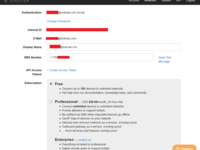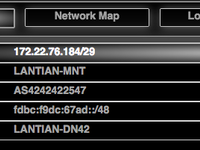2020-03-16 Notice This article has an updated version: see 《 Introduction to the DN42 Experimental Network (2020 Edition) 》. The new version features a more detailed registration process and has been updated to reflect changes in DN42 over the past three years. The following content was written in 2017 and is for archival purposes only. DN42, short for Decentralized Network 42, is a large-scale VPN network. Unlike traditional VPNs, DN42 utilizes technologies commonly deployed on internet backbones (such as BGP), effectively simulating a real-world network environment. Due to its realistic nature, the barrier to entry for DN42 is relatively high. You'll need to act as an ISP (Internet Service Provider): register an ASN number, obtain IPv4 and IPv6 address pools,...
Building Your Own IPv6 Tunnel with ZeroTier One
Preface Most ISPs in China do not provide IPv6 addresses to users, except for the Education Network. However, the IPv6 service on the Education Network is highly unstable (possibly specific to my institution), and once you leave campus, IPv6 becomes unavailable, which is quite frustrating. One alternative is using HE.NET's tunnel service . After SixXS shut down, they are currently the largest remaining IPv6 tunnel provider, and their service is completely free. However, their service isn't suitable for home network environments in China, as home networks typically have dynamic IPs, and some ISPs have started using large-scale NAT to save costs, preventing users from obtaining independent IPs and causing conflicts within the same internal network....

Establishing Dual-Stack Intercommunication Network Between Multiple Docker Servers Using ZeroTier One
Preface Achieving intercommunication between containers on multiple Docker servers is a challenging problem. If you build your own overlay network, you need to set up services like etcd on one server. But if the server hosting etcd crashes, the entire network goes down. The cheap VPS I use occasionally experiences network interruptions, and I often accidentally crash servers myself, so this approach isn't feasible for me. Docker also has other commercial overlay networking solutions like Weave, but for individual users, these solutions are too expensive (I'm just experimenting for fun), so they're not considered either. In these network architectures, central servers like etcd or Weave record which server each container is on and its internal IP, allowing DNS resolution to any container....
